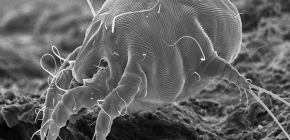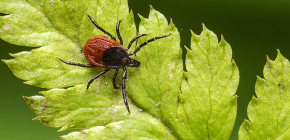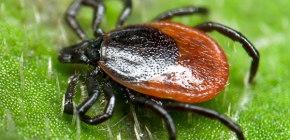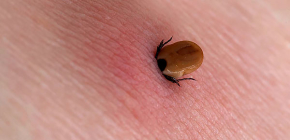About ticks

Ticks are a diverse and complex group of arachnids. It consists of a variety of representatives that can feed on plant sap, decaying organic matter, animal blood, sucking both outside and in body cavities. Among the variety of species and life forms, there are those that are dangerous to humans, as they can cause significant damage to our health. These include, first of all, Parasitiform mites (order Parasitiformes), which we will consider in more detail ...

The ear mite is a dangerous parasite that often infects dogs, cats, rabbits and other pets and causes them a disease called otodectosis (in other words, ear scabies). A dog can pick up otodect ticks anywhere: walking in the park, square, in the courtyard of the house. The disease develops rapidly and is characterized by pain and severe itching in the ears, which are accompanied by abundant discharge from the ear canals of a viscous brown mass, literally teeming with parasites and their eggs and capable of infecting other pets. If timely treatment is not started, then the disease can lead to complete deafness and even death of the animal ...

Ear mites are widespread parasites of domestic and wild animals. For humans, in general, they are not very dangerous, although cases of parasitism of the mite Otodectes cynotis have been recorded in humans.If the disease is started, then purulent otitis develops - suppuration is observed in the inner ear, which often leads to the spread of inflammation and its transition to meningitis. Next, we will talk in more detail about the interesting features of the biology of ear mites and effective methods of dealing with these parasites ...

When a person finds a sucked tick on the body, the question immediately becomes relevant whether the parasite is infected with the tick-borne encephalitis virus or not. The subsequent actions depend on whether the tick is encephalitic: for example, whether it is necessary to donate blood for antibodies to infection and whether it is necessary to carry out emergency prophylaxis of TBE by injections of immunoglobulin. We will talk further about whether it is possible to distinguish an encephalitic tick from an uninfected one without passing the parasite for analysis ...

The dog tick (Ixodes ricinus) is one of the most widespread and widespread representatives of the Ixodes tick group. Like all other species of this group, it is a dangerous parasite that feeds on the blood of more than 100 animal species. Among its hosts, humans and domestic animals play an important role, so the name "dog" does not reflect the food preferences of the parasite ...

Krasnottelkovye mites are a relatively little-studied extensive family of arthropods. Adult red beetles are free-living predators that live in the soil and do not pose a danger to humans, but their larvae are active parasites that can, among other things, feed on the blood of humans and domestic animals. Red beetle bites are painful and usually widespread.Such contacts are also dangerous because these red ticks are carriers of causative agents of tsutsugamushi fever, a serious natural focal disease caused by rickettsia ...

Ticks, which are carriers of dangerous diseases, can be found not only in wild forests, but also very close to human habitation - in city parks, small groves, in a country house or garden. We will talk further about exactly where ticks live in different locations, whether they are able to jump from trees and how to minimize the likelihood of contact with them…

Today, for the layman, the word "tick" is associated primarily with ixodid ticks. And this is not surprising - the ixodids are most famous (albeit sadly) among their brethren for the mortal danger that they can pose to humans. After all, ixodid ticks are carriers of tick-borne encephalitis, which still poses a threat to the lives of millions of people. In addition, in general, this group of parasites is very specific and interesting for many unique features of its biology...

Removing a stuck tick from the skin is a fairly simple procedure that can be done in just a minute directly in nature. However, it is often carried out with certain errors, which are fraught with an increased risk of contracting tick-borne infections or consequences in the form of skin suppuration. Let's see how you can quickly and safely remove a tick from the skin without complicated manipulations ...

Many people do not even suspect how many tens and even hundreds of species of ticks live literally side by side with us and affect not only our health, but also economic activity. And ixodid ticks (which people usually call forest ticks) the variety of these creatures is not limited. Dust mites that live in almost every home, itching that causes scabies, acne glands that infect almost all people on the planet by the age of 50, spider mites that imperceptibly breed on houseplants, as well as in gardens and kitchen gardens - these creatures are, in fact, ubiquitous …
